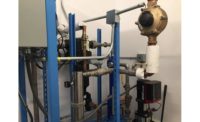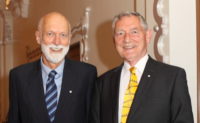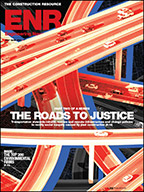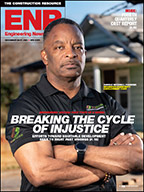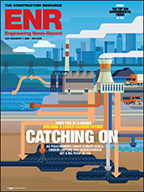George Little, HDR’s president of engineering, hesitates when asked to name a favorite project or two.
He and CEO Richard Bell confer quietly and then together say it’s not possible. “We’re proud of a lot of projects, a lot of clients,” Bell says.



Little adds, “We’re most proud of our long-standing relationships, of making our clients successful over a long period of time. Our job is never just one project.”
This dual philosophy of providing “work well done” (an early company motto) and putting people first has served HDR well.
Now a global firm with more than 7,800 employees, HDR started with one small office in Omaha, which is still its headquarters. Founder Henning H. “H.H.” Henningson was a man of grit, an Iowa farm boy turned Montana cowboy who talked his way into Iowa State University with only a seventh-grade education—and then made straight A’s in engineering.
Henningson finished school in 1907, eventually relocating to Nebraska for work. A job as a sales manager required him to travel the state—and planted a seed. In the small towns dotting the Plains, he recognized a need for civil engineering services to guide water, sewer, electric and street systems. In 1917, he founded Henningson Engineering Co. and for 36 years, until 1953, remained at the helm. Henningson died in 1958.
In 1950 the inclusion of Charles Durham and Willard Richardson in the company’s leadership sparked a name change. Henningson, Durham & Richardson Inc. would later be abbreviated to HDR. Five years later, in 1955, the firm added architectural capabilities.
Single Focus of Responsibility
“Clients today want a single focus of responsibility,” Bell says. “We are faced with challenges, especially with larger infrastructure projects.” He adds that even when a project isn’t architecture-focused, “We use our architectural department to increase our creativity.”
HDR would eventually become one of the nation’s largest architectural practices, consistently ranked No. 1 for health-care architecture.
Bringing architectural services in-house is but one example of HDR’s ability to sniff out—and willingness to react to—changes in the delivery of professional services. These traits are effectively coupled with a dogged focus on core strengths.
“We’re a very diverse company, but we provide for basic human needs,” Little says. “That’s a market that’s not going to go away. But we’re also nimble enough to change our service methods.”
HDR reveres client service as a basic, central value. “We work hard at maintaining relationships,” Bell says. For example, HDR can point to decades-long relationships, such as with the firm’s first health-care client, Nebraska Methodist Hospital in Omaha.
Years of growth led to HDR being purchased by international constructor Bouygues SA in 1983. That worked for a while, but when Bell took the helm in 1996, one of his first initiatives was an employee buyback.
“Working for ourselves remains important,” Bell says. “Employees garner rewards for their hard work; we provide...

